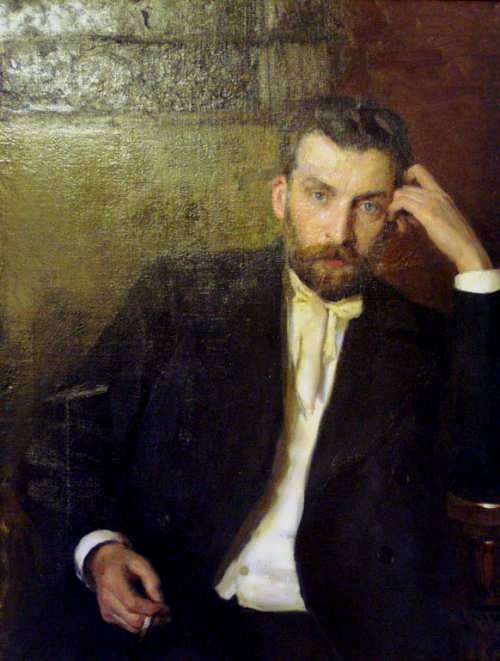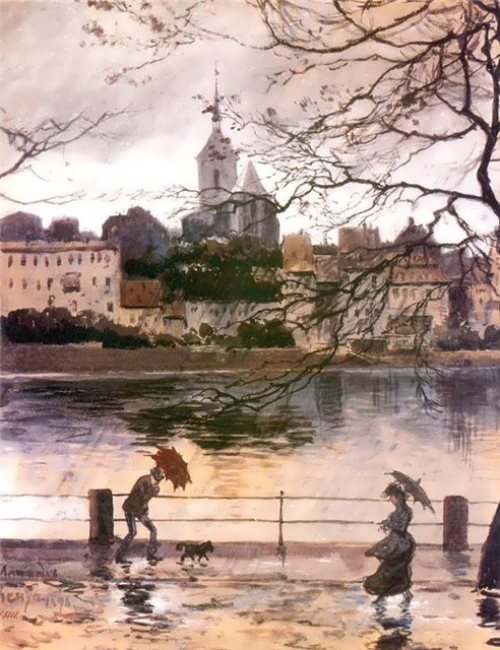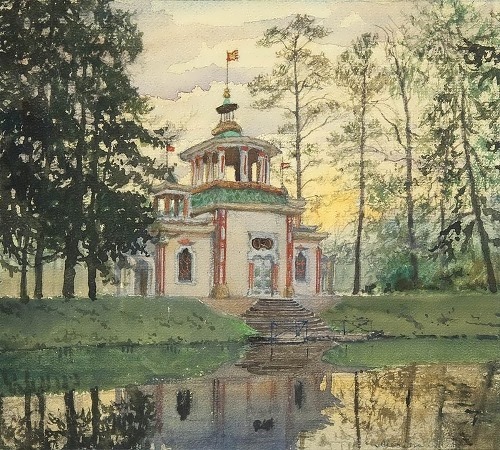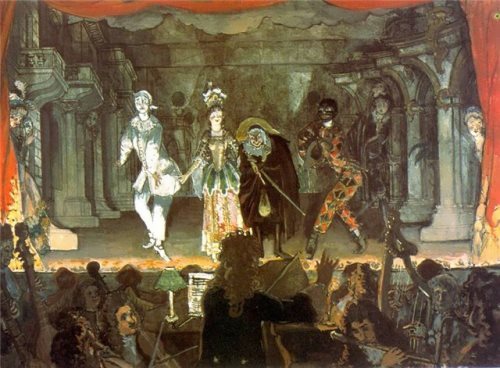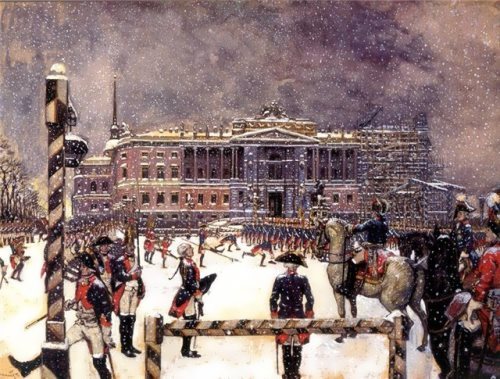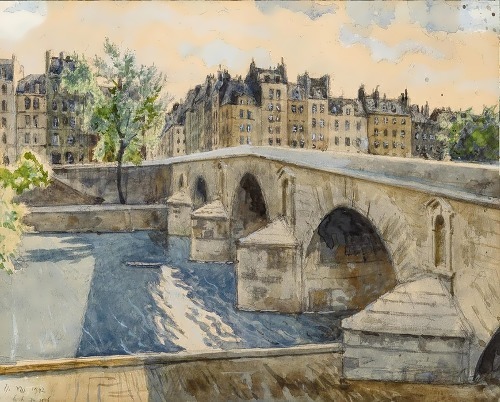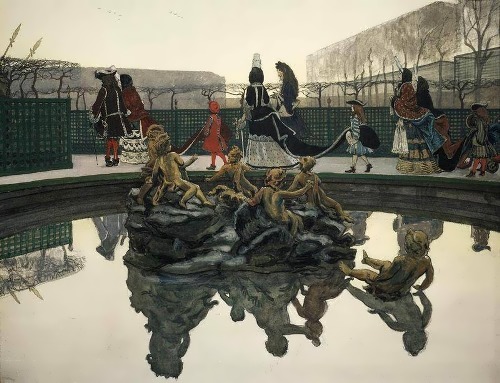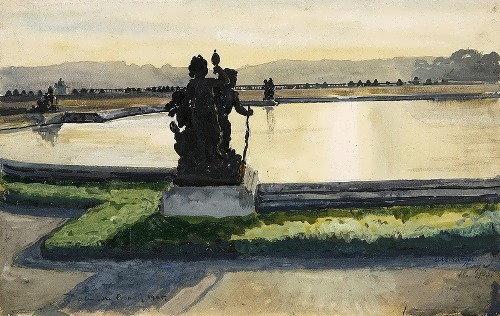Alexander Benois – Russian artist
The famous Russian artist Alexander Benois (1870-1960) was born into a well-known family. His mother Camilla Albertovna Benois (Kavos) was a musician and the father was a famous architect. You know, there were nine children in the family.
The future artist spent his childhood in St. Petersburg, where he studied at the private gymnasium of Karl May. Alexander continued his studies at the Faculty of Law of the St. Petersburg University and simultaneously attended classes at the Academy of Fine Arts. By the way, Benois showed himself as a writer and art critic, and supplemented Mutter’s book The History of European Art with a chapter on Russian art. From 1896 to 1898, Alexander lived and worked in France, where he painted the Versailles Series.
Besides, in 1898, Benois together with S. Diaghilev organized the association World of Art. The participants of the association held exhibitions, in which Roerich, Vrubel, Serov, Bilibin, Vasnetsov, Korovin and Dobuzhinsky took part. However, not all eminent artists favorably treated the World of Art. In particular, Repin did not like this company very much.
In 1905, Alexander went to France. There the ballet troupe Russian Seasons headed by Diaghilev was formed. Benois was its artistic director and in 1911 he created the world-famous scenery for the opera Petrushka by Stravinsky. What is more, Alexander helped to write the libretto for the opera.
In 1910, the artist published a Guide to the Hermitage. A few years later, Alexander bought a plot of land and built a dacha in the Crimea, where he rested and worked. The paintings and sketches made there are kept in many Russian museums. In the Soviet period, after his departure to France, when it became clear that Benoit would not return, the archive kept in the Crimean house of the artist was transferred to the Russian Museum, and personal belongings and furniture were auctioned off.
After the Revolution, Alexander worked in the Committee for the Protection of Cultural Monuments, was in charge of the Hermitage and was engaged in decorating performances in many theaters. The Wedding of Figaro was the last performance in the Bolshoi Drama Theater, set by the artist before leaving the country. In 1926, on the recommendation of Lunacharsky, Alexander went on a business trip to work at the Grand Opera in France. So Benois did not return to Russia. The artist continued to work, decorated scenery in many theaters, wrote books and painted pictures. Later he worked together with his son Nikolai and daughter Elena.
Alexander Benois died in Paris on February 9, 1960, before his 90th birthday. He left a huge number of works, publications and memoirs.
Throughout his life, Alexander, whose biography and work was inseparably linked with Russia, remained her ardent patriot and tried to make her culture popular all over the world.
The artist knew how to appreciate the greatness of the art of the past. This played a particularly important role in Russia at the beginning of the twentieth century, when capitalist buildings, ugly, profitable houses began to threaten the classical appearance of the city. Benois was an advocate of antiquities.
In the history of Russian book graphics, the artist entered with his book The Alphabet in Pictures by Alexander Benois (1905) and illustrations for The Queen of Spades by Alexander Pushkin. The highest achievement of book graphics were illustrations to Pushkin’s poem The Bronze Horseman. Actually, the artist worked on them for more than twenty years.
Personal life
Alexander was married and had two children – daughter Elena and son Nikolay. They both were artists. At the invitation of the National Opera Nikolay left for France in 1924. Then he moved to Italy, where for many years (from 1937 to 1970) was a director of the production section in La Scala. He was engaged in design of productions, many of which he did with his father. Also he worked in many well-known theaters of the world, and for three seasons staged performances at the Bolshoi Theater in Moscow.
Daughter Elena left Soviet Russia in 1926 and along with her father went to Paris. She was a famous painter, and her two pictures were bought by the French government. There are portraits of B. Chaliapin and Z. Serebryakova.
